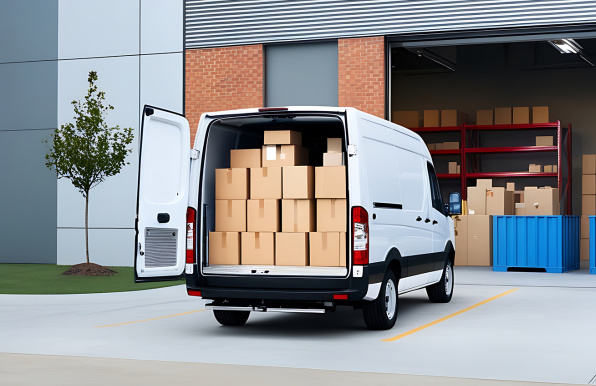- Last-Mile
- Carrier 3PL
- Route Optimization
7 Strategies to Cut Down Last Mile Delivery Costs and Lift Profits
Customer expectations continue to rise even as last mile delivery costs consume an ever-larger share of the logistics budget. Industry analysts project that the global last mile delivery market will reach approximately US$343 billion by 2032.
This represents an 8.8% compound annual growth rate, so every penny of waste will soon be multiplied at scale. A clear breakdown of last mile delivery cost helps teams target the biggest savings. Same-day shipping, live tracking, and doorstep flexibility delight buyers, yet each added promise tightens already-thin margins.
Unless enterprises know exactly where their money goes, they risk trading profitability for service and the reverse. Let us examine why last mile delivery costs continue rising, present a breakdown, and outline seven tactics that cut expenses, enhance customer experience, and build loyalty.
Why Last Mile Delivery Costs are Rising and Why They Matter More Than Ever
The final leg was once a premium add-on. Now, it is central to the brand promise. Knowing why the price keeps climbing is the first step toward meaningful improvement.
- What is Last Mile Delivery, and Where do the Costs Come From?
Last Mile delivery covers every activity from a local hub to the recipient's doorstep. As each stop is unique, the expense profile is complex. Labor, vehicles, fuel, technology, packaging, and customer support all feed into last mile delivery costs. When routes are underutilized, or orders arrive in low density, per-parcel last mile costs climb quickly.
- The True Impact of Last Mile Costs on Business Profitability
Free or discounted shipping remains a top conversion driver, yet much of the fee still sits on the seller's books. Every increase in last mile delivery costs decreases the margin dollar for dollar. Even small savings scale rapidly across thousands of stops, making careful management of last mile costs essential for profit protection.
- Top Factors Pushing Up Last Mile Delivery Costs
Driver wage inflation, congestion tolls, time-window guarantees, and rising return rates all contribute to increasing last mile delivery costs. Extended service territories add miles, while urban low-emission regulations introduce new fees. Each factor widens the breakdown of last mile delivery costs, signaling the need for smarter controls.
Breaking Down the Real Cost of Last Mile Delivery
A transparent last mile delivery cost breakdown clarifies where optimization delivers the greatest benefit.
- Labor: The Biggest Line Item
Wages, overtime, training, and turnover collectively account for the majority of last mile delivery costs. Improving stop density, automating manual tasks, and reducing re-delivery visits all shrink last mile costs without compromising service. - Vehicles, Fuel, and Maintenance
Fleet leasing, depreciation, tires, fuel, and repairs form the next largest slice of the last mile delivery cost breakdown. Poor route planning extends drive time and accelerates wear, directly inflating last mile delivery costs. - Technology and Delivery Infrastructure
Route planning software, driver handhelds, and control tower licenses are often viewed as overhead, yet without them, costs spiral. Modern tools lower last mile delivery costs by reducing empty miles, and administrative hours, thereby offsetting their last mile costs. - Packaging, Handling, and Returns
Special materials for fragile goods, reverse logistics loops, and restocking labor all widen the last mile delivery cost breakdown. Efficient parcel sizing, smart return portals, and local drop points bring these last mile delivery costs down. - Insurance and Regulatory Costs
Liability coverage and compliance audits protect the brand but add to last mile delivery costs. Fewer incidents and proactive documentation keep this element of last mile cost stable. - Fees for Third-party Delivery Services
Marketplace commissions and gig-economy mark-ups rise as order volumes grow. A balanced in-house and outsourced strategy prevents these charges from dominating the last mile delivery cost breakdown.
7 Ways to Reduce Last Mile Delivery Costs and Boost Profits
Optimization must protect both margin and customer experience. The 7 tactics below target a major driver of last mile delivery costs, showing how disciplined execution converts expense into value.
- Enhance Fleet Visibility and Real-time Tracking
End-to-end telematics, IoT sensors, and a cloud control tower expose idle time, traffic chokepoints, and route deviations the moment they arise. Dispatchers who act on those insights can reroute vehicles before delays compound, shaving minutes from every trip.
Faster exception handling also cuts call-center volume, lowering soft last mile costs overhead while preventing small issues from ballooning into expensive service failures that inflate overall last mile delivery costs. - Leverage Advanced Route Optimization
Modern optimization engines ingest live traffic, weather, driver hours, and vehicle capacity to recompute the best sequence of stops continuously. By feeding this data into machine-learning models, companies generate leaner routes that reduce fuel burn and maintenance cycles, two key elements in any last mile delivery cost breakdown.
Improved asset utilization keeps trucks fuller for longer stretches, directly shrinking recurrent last mile delivery costs and extending vehicle lifespan. - Improve Customer Communication and Engagement
Proactive SMS, email, or app notifications give recipients accurate ETAs, self-service rescheduling, and real-time driver location. This transparency calms delivery anxiety and raises first-attempt success, a metric tightly linked to total last mile delivery costs.
Fewer "Where is My Order?" (WISMO) inquiries streamline customer support staffing, while self-serve options eliminate costly manual interventions that would otherwise drive up the last mile cost per parcel. - Streamline Proof of Delivery Processes
Digital signatures, photo validation, QR scans, and automatic address matching cut dwell time at the doorstep. Rapid confirmation frees drivers to complete more stops during a shift, spreading fixed-wage expenses across a larger delivery base.
Shorter hand-offs also tighten the entire last mile delivery cost breakdown by reducing overtime and minimizing disputes that could lead to costly rework, thereby lowering cumulative last mile delivery costs. - Analyze Operational Data for Cost Insights
Dashboards that slice performance by zone, vehicle, and driver reveal hidden pockets of inefficiency, longer dwell times at certain addresses, excessive fuel consumption on specific routes, or unbalanced territory design.
Relocating a micro-hub closer to demand or reassigning high-density neighborhoods can reset long-term last mile cost curves. Continuous analytics ensures that improvements stick, preventing drift that would otherwise cause last mile delivery costs to rise again. - Reduce Failed Delivery Attempts
Address-validation engines catch typos at checkout, while parcel lockers, neighbor authorizations, and dynamic time-window incentives keep packages out of the re-delivery queue.
Each prevented retry removes extra miles, driver hours, and support calls from the last mile delivery cost breakdown. Higher first-attempt delivery rates also protect customer satisfaction, creating a virtuous cycle in which lower last mile delivery costs and higher loyalty reinforce each other. - Invest in Scalable, Automated Delivery Technology
Machine learning dispatch tools, autonomous support robots, and modular control tower platforms automate repetitive tasks and maintain optimal routing, eliminating the need for human intervention.
Although capital spending rises initially, the lifetime savings, fewer empty miles, reduced manual planning, and consistent regulatory compliance compress ongoing last mile delivery costs year after year. Scalability ensures that the cost per parcel remains stable even as order volumes climb, locking in a structurally lower last mile cost foundation.
Ready to Cut Costs and Delight Customers? See How FarEye Helps
Turning high last mile delivery costs into a competitive advantage requires technology, insight, and continuous improvement. FarEye's AI-powered platform unifies routing, real-time visibility, customer communication, and returns management to solve each element of your last mile delivery cost breakdown.
One example comes from Greece's innovative last mile leader, which realized a 50% reduction in operational expense by deploying FarEye's optimization toolkit. Further, it can help you eliminate empty miles, automate proof-of-delivery, and keep first-attempt success high, all while meeting ever-tighter service promises.
If you are ready to reduce last mile costs, elevate customer satisfaction, and future-proof your logistics, schedule a personalized FarEye consultation today and start transforming every mile into measurable value.

Komal Puri is a seasoned professional in the logistics and supply chain industry. As the AVP of Marketing and a subject matter expert at FarEye, she has been instrumental in shaping the industry narrative for the past decade. Her expertise and insights have earned her numerous awards and recognition. Komal’s writings reflect her deep understanding of the industry, offering valuable insights and thought leadership.
Let's Talk to Our Experts and Optimize Your Deliveries Today!
An expert from our team will reach out within 24 hours



